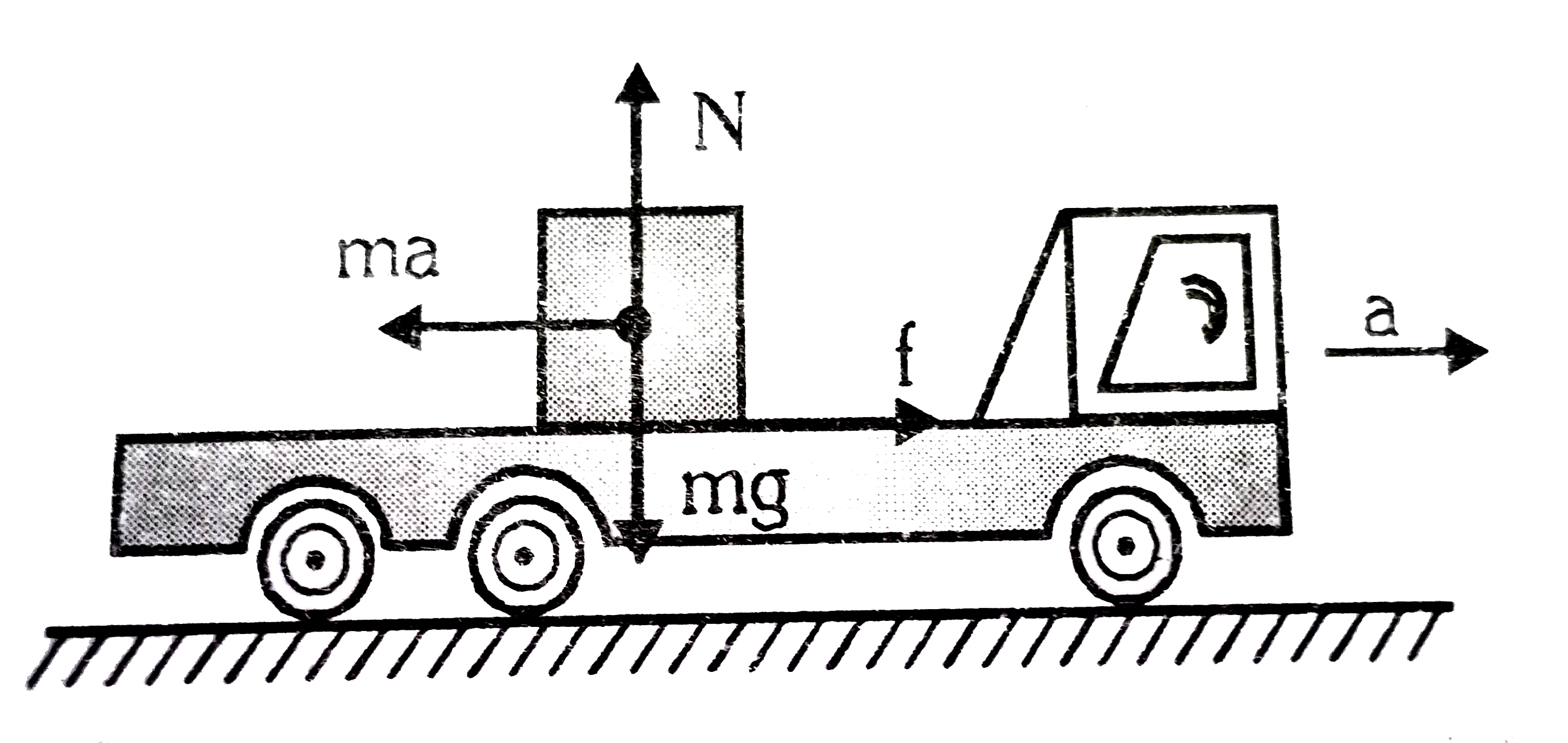A person in an elevator accelerating upwards with an acceleration of 2 ms−2, tosses a coin vertically upwards with a speed of 20 ms−1. After how much time will the coin fall back into his hand ?
( take g=10ms−2)
1.67s
2s
3.33s
5s
The correct Answer is:C
3.33s
Topper's Solved these Questions
- LAWS OF MOTIONBook:MTG GUIDEChapter:LAWS OF MOTIONExercise:AIPMT /NEET (MCQ)
Explore 24 Videos
- LAWS OF MOTIONBook:MTG GUIDEChapter:LAWS OF MOTIONExercise:NEET CAFÉ (TOPICWISE PRACTIVE QUESTIONS) (FRICTION)
Explore 27 Videos
- KINEMATICS Book:MTG GUIDEChapter:KINEMATICS Exercise:AIPMT/ NEET MCQs
Explore 31 Videos
- MOTION OF SYSTEM OF PARTICLES AND RIGID BODY Book:MTG GUIDEChapter:MOTION OF SYSTEM OF PARTICLES AND RIGID BODY Exercise:AIPMT / NEET (MCQs)
Explore 37 Videos
Similar Questions
A block of mass m is in contact with the cart C as shown in the figure. The coefficient of static friction - between the block and the cart is u. The acceleration a of the cart that will prevent the block from falling satisfies

View SolutionA block of mass 1kg lies on a horizontal surface in a turck, the coefficient of static fricition between the block and the surface is 0.6, what is the force of fricition on the block. If the acceleration of the truck is 5m/s2.

View SolutionA particle move a distance x in time t according to equation x=(t+5)−1. The acceleration of particle is alphaortional to.
View SolutionA circular disk of moment of inertia It is rotating in a horizontal plane , about its symmetry axis , with a constant angular speed ωi . Another disk of moment of inertia Ib is dropped coaxially onto the rotating disk . Initially the second disk has zero angular speed . eventually both the disks rotate with a constant angular speed ωf . The energy lost by the initially rotating disc to friction is
View SolutionAn elevator is accelerating upwards with a constant acceleration a ms^-2 . If a coin is dropped in it by a passenger, then.
View SolutionA person in an elevator accelerating upwards with an acceleration of 2ms−2 , tosses a coin vertically upwards with a speed of 20ms−1 . After how much time will the coin fall back into his hand ? (g = 10 ms−2)
View SolutionA person in an elevator accelerating upwards with an acceleration of 4 ms^(-2) tosses a coin vertically. Upwards with a speed of 21 ms^(-1) with respect to himself. The time at which coin will back into his hand is (g = 10 ms^(-2))
View SolutionA person in an elevator accelerating upwards with an acceleration of 2ms^(-2) , tosses a coin vertically upwards with a speed of 20 ms^(-1) . After how much time will the coin fall back into his hand ? (g = 10 ms^(-2) )
View SolutionA man is riding an elevator which is rising up with a uniform acceleration of 2ms−1 He tosses a coin vertically upwards with a speed of 20 ms. What time the coin would take to fall back into his hands?(Takeg=10ms−2)
View Solutionएक व्यक्ति 2 मी/सेकण्ड2 के त्वरण से ऊपर की ओर जाती हुई लिफ्ट में बैठा हुआ है। वह ऊपर की ओर 20 मीटर प्रति सेकण्ड की चाल से एक सिक्के को उछालता है। सिक्का कितने समय के पश्चात् उसके हाथ में वापस गिरेगा?
(g = 10 मीटर/सेकण्ड2)
View SolutionAn elevator weighing 6000kg is pulled upward by a cable with an acceleration of 5m/s−2. Taking g to be 10ms−2, find the tension in the cable.
View SolutionAn elevator weighing 6000kg is pulled upward by a cable with an acceleration of 10 m/ s^(2) . Taking g to be 10 m s^(-2) , find the tension in the cable
View SolutionA person in an elevator accelerating upwards with an acceleration of 2ms2, tosses a coin vertically upwards with a speed of 20ms−1 . After how much time will the coin fall back into his hand ? (g = 10 ms2)
View SolutionA person in an elevator accelerating upwards with an acceleration of 2ms−2 , tosses a coin vertically upwards with a speed of 20ms−1 . After how much time will the coin fall back into his hand ? (g = 10 ms−2)
View SolutionAn elevator weighing 6000kg is pulled upward by a cable with an acceleration of 5m/s−2. Taking g to be 10ms−2, find the tension in the cable.
View Solution

